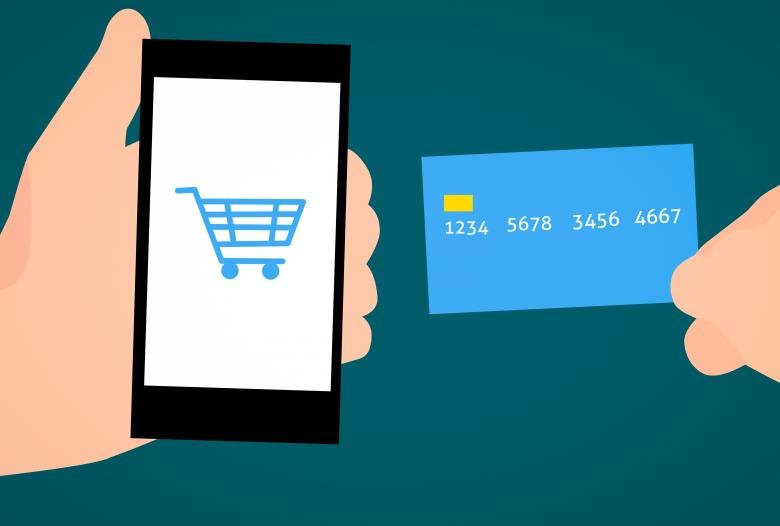In the vast realm of the online marketplace, speed is the ultimate ammunition for victory. Picture this: a user lands on your eCommerce website, eager to explore the virtual aisles, only to be met with a sluggish loading bar. Disappointed, frustration builds and their patience dwindles. In the blink of an eye, they abandon your site, seeking faster alternatives elsewhere. In this cutthroat world, every millisecond counts, and the race towards lightning-fast load times becomes paramount. Welcome to the realm where websites optimize and conquer – armed with the transformative power of speed, a game-changer in the eCommerce industry. In this article, we will explore the art of transforming sluggish websites to high-speed powerhouses, uncovering the secrets to ensuring your eCommerce site leaves your competitors in the virtual dust. Prepare yourself, for it’s time to optimize and conquer with lightning-fast load times.
Table of Contents
- Improving Website Performance: The Key to Lightning-fast eCommerce Load Times
- Analyzing Load Time Factors: From Images to CSS, Optimizing Every Element
- Optimization Techniques and Best Practices: Boosting eCommerce Load Times
- Enhancing User Experience: Recommendations for a Seamless Shopping Journey
- Q&A
- The Conclusion

Improving Website Performance: The Key to Lightning-fast eCommerce Load Times
Website performance is crucial when it comes to running a successful eCommerce business. In today’s fast-paced digital world, users expect lightning-fast load times, and studies have shown that slow websites can lead to increased bounce rates and decreased conversion rates. So how can you optimize your eCommerce site to ensure it loads quickly and efficiently? Let’s dive in!
1. Minimize HTTP requests: One of the major factors that can slow down your website is the number of HTTP requests it needs to make. Each image, CSS file, or JavaScript file requires a separate HTTP request, so it’s essential to minimize these requests. Combine multiple CSS files into one and use CSS sprites to reduce the number of image requests.
2. Optimize images: Images are often the largest files on a webpage, and if they’re not optimized, they can significantly slow down load times. Compress your images using tools like TinyPNG or Kraken.io to reduce file sizes without sacrificing quality. Additionally, consider using responsive images to serve different image sizes based on the user’s device, which can further improve performance.
3. Utilize browser caching: By enabling browser caching, you can store static files on the user’s device, allowing them to be accessed quickly without requiring another server request. This can make a significant difference in load times, especially for return visitors.
4. Minify CSS and JavaScript: Minifying your CSS and JavaScript files involves removing unnecessary characters and spaces, reducing their size and improving load times. There are various online tools and plugins available that can automatically minify your code, such as YUI Compressor or UglifyJS.
Remember, optimizing your eCommerce site for lightning-fast load times isn’t a one-time task. Continuously monitor your site’s performance and make tweaks whenever necessary. By following these optimization techniques, you’ll ensure that your website is running at its best, providing a seamless and satisfying user experience that leads to increased conversions and ultimately, eCommerce success.
Analyzing Load Time Factors: From Images to CSS, Optimizing Every Element
In the world of eCommerce, a lightning-fast website can make all the difference between a successful transaction and a lost customer. To optimize and conquer the realm of load times, it is crucial to dive deep into each and every element that contributes to the speed of your website. From the weight of your images to the efficiency of your CSS, every factor plays a vital role in creating a seamless user experience. Let’s explore some key elements that demand careful analysis and optimization:
1. Images: Images are notorious for slowing down website load times. To optimize them, consider compressing them using tools like TinyPNG or JPEGmini. Additionally, ensure that you are using the appropriate file format for your images to minimize their size. Using responsive images that adapt to different screen sizes can also enhance load times.
2. CSS: Cascading Style Sheets (CSS) dictate the visual presentation of your website. When it comes to optimizing CSS, strive to minimize redundancy and streamline your code. Avoid inline styles and utilize external CSS files to take advantage of browser caching. Additionally, try combining and minifying CSS files to reduce the number of HTTP requests.
By paying attention to these load time factors, you can revolutionize the speed at which your eCommerce website operates. Remember, speed is the key to capturing and retaining customers in today’s fast-paced online landscape. Stay tuned for more valuable insights and optimization tips in our upcoming posts!![]()
Optimization Techniques and Best Practices: Boosting eCommerce Load Times
In today’s fast-paced world, speed is everything. When it comes to eCommerce websites, every second counts. Customers expect lightning-fast load times, and if your site takes too long to load, they will simply move on to your competitors. Optimizing your eCommerce website for faster load times is crucial not only for providing a seamless user experience but also for improving your search engine rankings.
To help you conquer the challenge of boosting eCommerce load times, here are some optimization techniques and best practices:
1. Compress and minify your files: Reduce the size of your HTML, CSS, and JavaScript files by removing unnecessary characters and whitespace. This will significantly reduce the time it takes for your website to load.
2. Optimize your images: Images are often the largest files on a webpage, so optimizing them is crucial. Use tools like Adobe Photoshop or online services like TinyPNG to compress your images without compromising their quality. Also, consider lazy loading, which loads images only when they are visible on the screen.
3. Utilize browser caching: Leverage browser caching to store static files on your visitors’ devices. This way, when someone visits your site again, these files can be retrieved locally, reducing the amount of data that needs to be downloaded.
Remember, the faster your eCommerce site loads, the happier your customers will be, and the more likely they are to make a purchase. By implementing these optimization techniques and best practices, you’ll be well on your way to delivering a lightning-fast user experience and gaining a competitive edge in the eCommerce world. So, start optimizing and conquer the challenge of boosting load times!
Enhancing User Experience: Recommendations for a Seamless Shopping Journey
User experience is a critical factor in the success of any eCommerce website. In order to provide a seamless shopping journey for your customers, it’s essential to optimize your website’s load times. Slow loading pages can lead to frustration, higher bounce rates, and ultimately lost sales. Here are some recommendations to enhance the user experience by ensuring lightning-fast load times:
1. Optimize images: Large image files can significantly slow down your website. Compress and resize your images without sacrificing quality to reduce their file size. Consider using a content delivery network (CDN) to deliver images from servers closer to the user’s location, further improving load times.
2. Minimize HTTP requests: Each element on your web page, such as images, scripts, and stylesheets, requires an HTTP request to load. Minimize the number of requests by combining or eliminating unnecessary files. Use CSS sprites to combine multiple images into one, reducing the number of requests needed.
3. Enable browser caching: Browser caching allows a website to store certain elements, such as images and scripts, locally on the user’s device. By doing so, subsequent visits to your site will load faster as the browser doesn’t need to download these files again. Set appropriate cache times to strike a balance between performance and ensuring users get fresh content when necessary.
4. Use a content delivery network (CDN): A CDN distributes your website’s content across multiple servers worldwide, reducing the distance between the user and the server. This results in faster load times, especially for users located far from where your website is hosted. Popular CDNs such as Cloudflare and Akamai offer easy integration options and can significantly improve the performance of your eCommerce site.
By following these recommendations, you can optimize your website for lightning-fast load times, providing a seamless shopping journey for your users. Remember, every second counts when it comes to online shopping, and improving load times can lead to higher conversions, customer satisfaction, and ultimately, success in the eCommerce industry.
Q&A
Q: Are slow page load times affecting your eCommerce business growth?
A: Yes, slow page load times can have a significant impact on the success of an eCommerce business. Customers expect quick and seamless online experiences, and if your website is slow to load, they may abandon their purchase and go elsewhere.
Q: How can I optimize my eCommerce website’s load times?
A: There are several ways to optimize your eCommerce website’s load times. Firstly, consider compressing images to reduce file sizes without compromising quality. Minify your CSS and JavaScript files to eliminate unnecessary code. Utilize browser caching to store frequently accessed files, reducing the need to download them from scratch. Finally, consider upgrading your hosting plan to improve server response times.
Q: What is the ideal page load time for an eCommerce website?
A: The ideal page load time for an eCommerce website is under three seconds. Studies have shown that customers expect websites to load quickly, and anything beyond three seconds can lead to a significant drop in conversion rates.
Q: How can a fast loading eCommerce website positively impact conversions?
A: A fast loading eCommerce website has a direct correlation with improved conversions. When customers are met with instantaneous page load times, they are more likely to stay on your site, explore your products, and ultimately complete a purchase. Fast load times create a seamless user experience that instills trust and confidence in your brand.
Q: Are there any specific strategies to improve mobile load times?
A: Yes, optimizing mobile load times is crucial, considering the rise of mobile shopping. Opt for a responsive design that adjusts to different screen sizes, ensuring smooth navigation. Implement lazy loading, which prioritizes loading content as users scroll, rather than all at once. Additionally, minimize the number of pop-ups, animations, and plugins that could slow down the mobile experience.
Q: How can website performance monitoring help improve eCommerce load times?
A: Website performance monitoring tools provide valuable insights into your website’s speed and performance. By analyzing data and identifying bottlenecks, you can make informed decisions on which areas to optimize. Regular monitoring allows you to track your website’s progress and ensure ongoing improvements to keep up with customer expectations.
Q: What impact does improved load times have on SEO?
A: Improved load times positively impact SEO by boosting a website’s search ranking. Search engines like Google consider page speed as a ranking factor because they prioritize delivering the best user experience. Faster-loading websites are more likely to rank higher in search results, leading to increased organic traffic and visibility.
Q: Are there any emerging technologies to further accelerate eCommerce load times?
A: Yes, emerging technologies like Content Delivery Networks (CDNs) and Accelerated Mobile Pages (AMP) can further accelerate eCommerce load times. CDNs help distribute website content across multiple servers worldwide, reducing the distance data travels and improving load times. AMP is a framework that creates lightweight and fast-loading mobile pages, specifically designed for quick mobile browsing.
Q: What are the consequences of not prioritizing eCommerce load times?
A: Not prioritizing eCommerce load times can have severe consequences for your business. Slow load times result in higher bounce rates, decreased customer satisfaction, and lower conversions. Additionally, dissatisfied customers are more likely to leave negative reviews and spread word-of-mouth about their poor experience, damaging your brand’s reputation. Ultimately, neglecting load times can lead to a loss of revenue and hinder your business growth potential.
The Conclusion
In a world where every second counts, optimizing eCommerce load times has become a crucial strategy for online businesses. We’ve explored the importance of lightning-fast load times in delivering a seamless customer experience and leaving the competitors trailing in the dust. From uncovering the key factors that affect page speed to implementing effective optimization techniques, we’ve armed you with the knowledge to conquer the digital realm.
By understanding the impact of load times on conversion rates, bounce rates, and overall website performance, you’re now equipped with the power to unleash lightning-fast eCommerce success. Remember, a blink of an eye can make or break the customer’s purchasing decision. So, don’t let slow loading times become the Achilles’ heel of your online store.
Now, armed with the know-how to optimize your website for peak performance, it’s time to unleash the full potential of your eCommerce venture. From compressing images to fine-tuning server response times, each optimization technique discussed in this article paves the way for sky-high loading speeds and unrivaled user experience.
In this digital age, speed is the name of the game, and by conquering slow loading times, you’ll undoubtedly establish yourself as a force to be reckoned with in the competitive eCommerce landscape.
So, go forth and optimize. Dominate the digital domain. Illuminate the path to speed and success. With lightning-fast eCommerce load times at your disposal, there’s no limit to what you can achieve. Trust in the power of optimization, and conquer the world of eCommerce.

